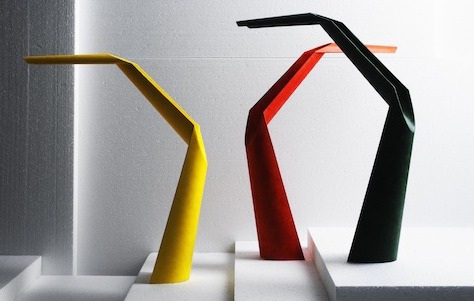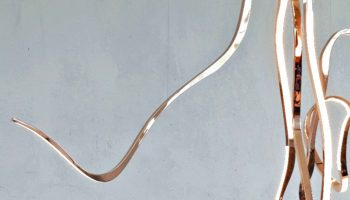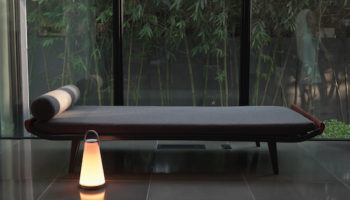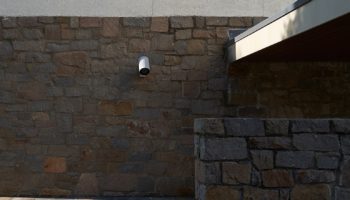Magnus Wästberg’s DuraPulp Lamp
If the term “DuraPulp” rings a bell, kudos to you and thanks for reading, because surely you recall Alicita’s coverage some six weeks back of A Piece of Forest Lamp by SödraPulp Labs. This handsome honeycomb of a modular lamp is constructed of said DuraPulp, a revolutionary new material that’s essentially a hybrid of corn and paper. The very same sustainable, readily-available, and biodegradable material forms the backbone (and feet and head) of Claesson Koivisto Rune’s w101, also known as the The Wästberg DuraPulp Lamp.
DuraPulp Lamp. Designed by Magnus Wästberg for Claesson Koivisto Rune.
Wästberg and Durapulp take Best of Show at ICFF
About three years back, famed architectural firm CKR concocted a chair from Durapulp. Intrigued with the possibilities, the trio then approached designer Magnus Wästberg, who came up with w101. Though Wästberg was initially skeptical about having durapulp in such close proximity to electrical wiring, the proverbial lightbulb soon went off in the form of low wattage LEDs.

To achieve the unique angular identity of w101, Wästberg ran four thin, uninsulated wires between compressed sheets of Durapulp. The weighty power supply in the cast iron base gives w101 structural stability, thus making the lamp a feat of cantilevered engineering that just also happens to provide perfectly even distribution of light.

The advantage of using LEDs (besides the obvious perks of low-energy use and attractive, even light) is low voltage and amperage, such that the miniscule bulbs can be safely embedded in paper. Thus, w101 becomes a lightweight, low cost, and sustainably-made task lighting solution, which, once its usage life has come to its end, is also biodegradable. No wonder it took home best of show at the recently-concluded ICFF… not to mention this year’s Reddot, Good Design, and Swedish Design Awards as well.
Via TreeHugger.
About the Manufacturer: Fans of famed director Ingmar Bergman will appreciate fellow Swede Magnus Wästberg’s musings about the nature of light: “Man began to over-illuminate rooms and halls. General lighting was calibrated for the areas that needed the most light. Far too many areas received far too much light. Man felt dazzled and irradiated. Man no longer felt comfortable or safe.” For Wästberg, the solution to this garish over-exposure is carefully calibrated modulation—direct light only where needed and softened ambient light. The approach bears fruit as supremely functional, eminently economical, and incredibly efficient lighting, that—if pieces like Massaud’s w083, Van Severen’s w111t, and Claesson Koivisto Rune’s w101 are any indication—also happens to be exceptionally beautiful too.




Leave a Reply